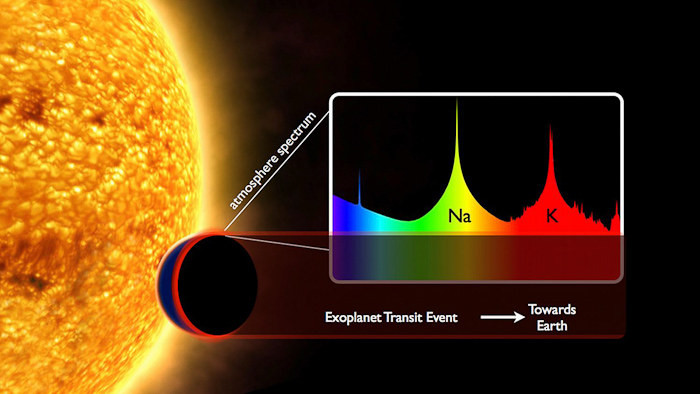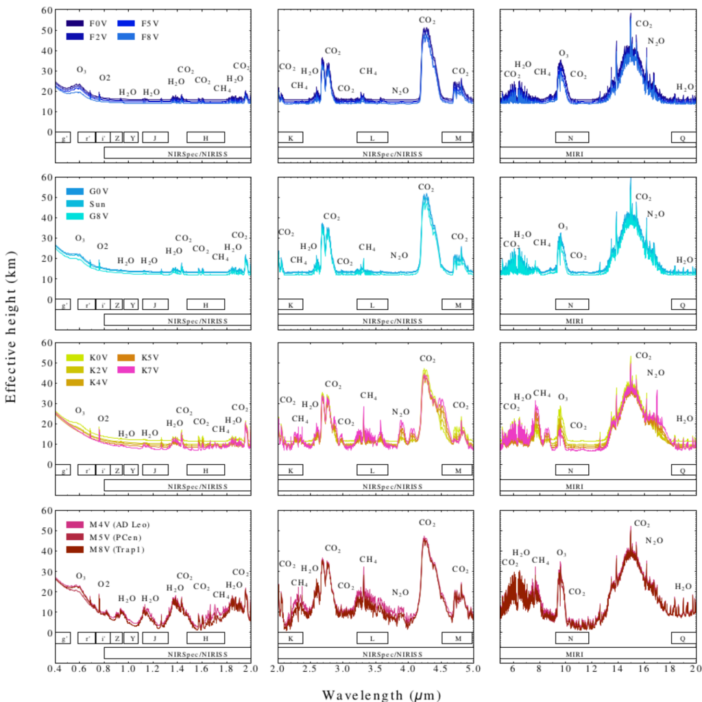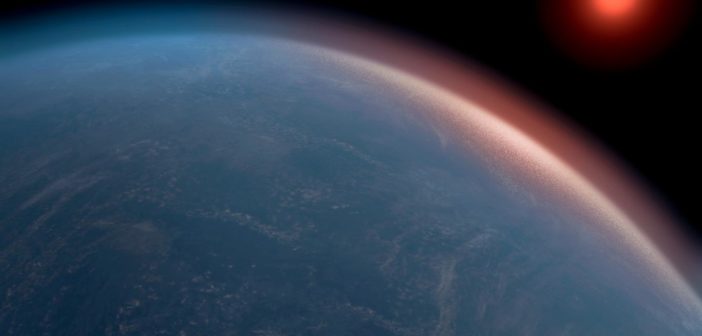Editor’s note: Astrobites is a graduate-student-run organization that digests astrophysical literature for undergraduate students. As part of the partnership between the AAS and astrobites, we occasionally repost astrobites content here at AAS Nova. We hope you enjoy this post from astrobites; the original can be viewed at astrobites.org.
Title: Finding Signs of Life in Transit: High-resolution Transmission Spectra of Earth-like Planets around FGKM Host Stars
Authors: Lisa Kaltenegger, Zifan Lin
First Author’s Institution: Cornell University & Carl Sagan Institute
Status: Published in ApJL
Anybody Out There?
One of the most fascinating topics in astronomy — and maybe in philosophy, as well — is the potential existence of other life out there in space: strange planets orbiting other stars, developing and evolving their own biology under unique circumstances.
Fortunately, life leaves so-called biosignatures for the keen observer to find; these biosignatures should be most prominent in the atmosphere of an inhabited planet. The presence of certain substances and molecules in an atmosphere suggests biological processes indicative of life. For instance, life creates large amounts of molecular oxygen (O2) by photosynthesis and small amounts of methane (CH4) on Earth. The simultaneous presence of these two molecules are strongly suggestive of biological processes, since on short timescales, these two species react to create carbon dioxide (CO2) and water (H2O) and must therefore constantly be replenished to remain detectable. The same goes for ozone (O3), which, if not replenished, decays into O2 within days. Water is often mentioned as an important secondary indicator for life as well as carbon dioxide. On their own, these molecules are not decisive, however in combination they can paint a clearer picture.

Figure 1: As a star’s light filters through a planet’s atmosphere on its way to Earth, the atmosphere absorbs certain wavelengths depending on its composition. [European Southern Observatory]
New telescopes, such as the JWST and the ELT, make this highly detailed, so-called transmission spectroscopy possible. But where should we look to maximize our chances of actually finding life?
Simulating Biosignatures
The authors of today’s paper simulated the spectra of 12 Earth-like planets around FGK stars (between about 1,900 Kelvin cooler and 1,200 Kelvin hotter than the Sun) and 10 M dwarfs (about 1,900 Kelvin to 3,300 Kelvin cooler than the Sun) to a level of detail that will be achieved with upcoming spectrographs. In this way, researchers can prioritize exoplanets for atmospheric investigation, according to the expected signal strength of the biosignatures.
To conduct this simulation, a model is required. It takes into account the planet, its location, and any processes we know of that influence its atmosphere.
The habitable zone is largely defined by conditions that make liquid water possible. For the purposes of this work, the temperature on the simulated Earth-like planets was set to 288 Kelvin +/- 2%. To maintain this temperature, different stellar types have their habitable zones at different radial distances. Thus, a habitable planet around an M dwarf is much closer to its host star than a similar planet around a F star.
In terms of the simulated planet’s architecture, the authors decided to model the planets using Earth-like properties. The planets were simulated to have one Earth-radius, one Earth-mass, and similar rates of irradiance, outgassing, composition (70% ocean and 30% land made from basalt, granite, sand, grass, trees, and snow), surface pressure, and cloud coverage relative to modern Earth.
Now, let’s talk about our biosignature pairs O2+CH4 and O3+CH4. Ozone layer depth decreases for lower ultraviolet (UV) light environments, since it is this radiation that splits up O2 in the atmosphere, so that the two halves may combine with other O2 molecules and build O3. On the other hand, methane concentration increases with lower UV radiation since the molecules that methane reacts with on Earth are indirectly created with the help of UV light.
However, methane may be reduced by so-called space weather. This includes stellar activity, such as flares or stellar winds which send out charged particles at the planets, which then interact with the atmospheres. It is thus important to check the surroundings of the planet when searching for life on it, since non-biological environmental factors can be responsible for additionally increasing or decreasing biosignatures.
How Deep Can You Go?
The authors divided up the planetary atmospheres into 52 layers and simulated the width and strength of the spectral lines for each. There is a limit to the depth an observer may look into an atmosphere, since deeper layers deflect the light. Earth’s atmosphere, for example, could be probed to around 13 km above ground. Depending on the stellar type and thus the predominant wavelengths emitted by the star (shorter wavelengths coming from hotter stars are refracted more severely than the longer wavelengths emitted by cooler stars), planetary atmospheres can be probed to between 15.7 km (for planets orbiting F0V type stars) and 0 km (for planets orbiting M8V type stars) above their surface.
Clouds can heavily obscure spectral features of the layers below them. Because we do not know any details about cloud coverage on exoplanets, the authors included hypothetical spectra considering a 100% cloud coverage at a height of 6 km (the altitude of the middle layer of Earth clouds). This only affects the efficiency of detecting biosignatures for planets around M type stars, since they can theoretically be probed below this altitude.
Who Shows Their True Colors?
The overall strength of a spectral feature is determined by its abundance in an atmosphere, as well as the maximum depth an atmosphere can be probed to during a transit. The resulting simulated spectra are shown in Figure 2.
CO2, water, and oxygen show similar signal strengths across all modeled atmosphere spectra, however for water and oxygen, the detectability is strongly dependent on the maximum probable depth due to their location at relatively low altitude. Thus, these features on an Earth-like planet around a hot F-type star would be extremely difficult to find.
Stars with increased UV radiation (F types as well as active M dwarfs) show a high abundance of ozone in their planets’ atmospheres. Methane features can be best detected on planets in orbit around cooler stars with lower UV environments.

Figure 2: Transmission spectra simulated by the authors for Earth-like planets hosting life in orbit around F stars (top row), G stars (second row), K dwarfs (third row), and M dwarfs (bottom row). The three columns display different wavelength ranges, from visible (left) through near-infrared (middle) to infrared (right) light. The most prominent spectral features are labeled with the names of their corresponding molecules. [Kaltenegger & Lin 2021]
The highly detailed simulation conducted by the authors will be an excellent tool to prioritize systems to search for life. With thousands of exoplanets already confirmed, this may prove vital in conducting efficient searches and will maybe one day allow us to look upon our night sky and point to the one little, insignificant dot that we then know illuminates someone else’s home.
Original astrobite edited by Katy Proctor.
A German translation of this article is available on Astrobites, also written by Jana Steuer.
About the author, Jana Steuer:
I’m a second year PhD student at the LMU Munich, working for the University Observatory (USM), which owns the 2.1m Fraunhofer Telescope Wendelstein. My field of research is exoplanets. I hunt for traces of them in data from big surveys, like the TESS mission and then follow them up, using spectroscopy and photometry. Mainly, I focus on long period planets that may potentially harbor life. When I’m not planet hunting, I act as a DM for several Dungeons and Dragons groups and annoy people with facts from Tolkien’s Silmarillion. I enjoy kickboxing and learning about ancient human history.

